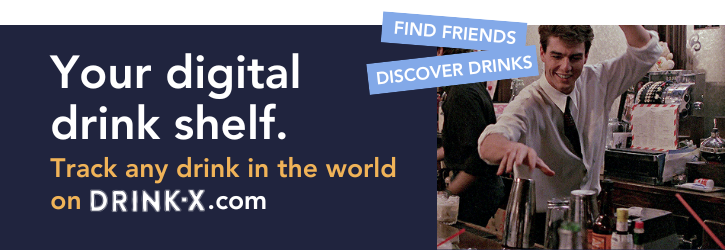Everything About Bordeaux First Growth Chateau Haut Brion + Taste Testing Chateau Haut Brion Grand Vin

Chateau Haut-Brion is undoubtedly the Bordeaux First Growth estate with the most lore to it - for most of its modern history, traces of its earliest mention came down to a purchase for the estate's wine by England's King Charles II in 1660. Already we're readily hinted at that this is no ordinary estate!
And even today, the estate belongs to the Domaine Clarence Dillon, so named after the famed American financier who had allegedly purchased the chateaux without even having taken a look at it, as it so happened that on the day he was due to visit the estate, it had proved to be a particularly rainy and chilly day, and so Dillon himself seems to have never even gotten out of the car! Today, Dillon's estate is helmed by Prince Robert of Luxembourg, who is the great-grandson of Dillon - once again connecting the estate to European royalty.

Everything You Needed To Know About Chateau Haut-Brion's Very Prominent History
But alas the lore goes even further back! In 2014, Prince Robert had put out a much attention grabbing challenge - the Haut-Brion Historical Challenge had sought to establish the earliest references to the estate in a bid to determine the true age of the chateaux. The winner would be generously paid in the form of a rare collection of wines from the Chateau Haut-Brion. The reward proved highly alluring and it was ultimately discovered that the estate was mentioned as early as the January 21st 1521, when a sale had taken place between a lord and a wealthy merchant for a perpetual annuity of the estate's wine. As it turns out, even in the 1500's, Aubrion (as it was known then, which was the name of the single vineyard owned by the estate) had already produced wines that were being actively traded! Rummaging for historical mentions aside, it's widely believed that the estate has featured winegrowing activities really from even the time of the Romans, and had at one point had its wines made sacramentally for a local chapel. This makes Chateau Haut-Brion the oldest, continuously producing wine estate in all of Bordeaux.
Yet, what was it about this estate that made it one of such outstanding fame and distinction? After all, it truly does stand apart, even from its First Growth peers all of whom belong to the Medoc area, whilst Chateau Haut-Brion is the only that finds itself in the Pessac-Leognan commune quite abit further down the Gironde River that separates the illustrious Bordeaux region. Much of its repute can likely be traced to one Arnaud III de Pontac, who had made a deliberate and unique effort in marketing Haut-Brion's wines to the English - after all, who else would write so extensively about a wine?


Arnaud de Pontac, probably France's first wine brand ambassador.
De Pontac had inherited the estate from his father Jean, who in turn had received the estate as part of his dowry when he had married Jeanne de Bellon, the daughter of the then Mayor of Libourne (a prominent town of Bordeaux). It was under Arnaud that the estate would expand and double in size, as he had began in search of a lucrative market for his wines. After England had experienced several successive changes to the throne, the ascendance of King Charles II proved to be a signal for Arnaud to aggressively market his wines to England. Arnaud had branded Haut-Brion a top class claret, and had even established a tavern by the name of L'Enseigne de Pontac or "Sign of Pontac's Head", with the sole focus of promoting Haut-Brion's wines in England. The tavern would even gain repute as London's first fashionable eating house! It's thus often a source of wonderment by wine historians Arnaud de Pontac's ingeniousness at being one of the earliest brand marketers of wines, having almost created a product that was designed to tackle the English market.

From the King Charles II to Hegel, President John F. Kennedy to Xi Jinping, Haut-Brion likely boasts the most illustrious who's who list of fans. Pictured above are menus of high profile dinners where Chateau Haut-Brion's wines have featured.
“There I drank a sort of French wine called Ho-Bryan that hath a good and most particular taste I never met with.”
- Samuel Pepys (the most notable wine critic of the time), often called the first ever tasting note of Haut-Brion.
It was thus Haut-Brion's entry into the English market that exposed the wine to much of the wine community of the time, and is also precisely what generated much lore about the estate. Everyone from US President Thomas Jefferson to English philosopher John Locke, and even German philosopher Hegel, would come to be massive fans of the estate's wines. Jefferson, a famous wine lover, would even list Haut-Brion's wines as being amongst the top 4 wines that he had enjoyed from Bordeaux. "I cannot deny myself the pleasure of asking you to participate of a parcel of wine I have been chusing for myself. I do it the rather as it will furnish you a specimen of what is the very best Bourdeaux wine. It is of the vineyard of Obrion, one of the four established as the very best, and it is of the vintage of 1784 (...)." wrote Jefferson to his brother-in-law. Indeed, Thomas Jefferson's purchase of 6 cases of Haut-Brion which he had shipped back to Virginia would serve as the first ever record of a Bordeaux First Growth being imported to the US.

Inside the chateaux.
By the late-1600's, Haut-Brion would eventually be handed down to the Lestonnac family who had also owned yet another would-be Bordeaux First Growth, Chateau Margaux. Eventually though, as the French Revolution would set upon France, the then owners of the estate would find themselves executed and their assets divided and sold. Over the next century, the estate would change hands numerous times, and in each instance being flipped for a much higher price than the last, yet unfortunately the estate's wines were not paid nearly as much attention, and would suffer in the coming years - it did however as a result of its historical reputation manage to achieve First Growth status in the legendary 1855 Bordeaux Classification, which of course has done much to preserve the inherent value of the estate, no matter what had become of it.

Haut-Brion Into Modernity
Into its modern - and current - era, we finally get to the point at which the estate becomes part of the Dillon family's stable. The illustrious American banker Clarence Dillon would pay a staggering price of 2.3 million French francs for the estate (which he allegedly did not even take a look at) in 1935. Dillon was apparently initially interested in fellow highly esteemed estates from Cheval Blanc and Ausone, to Chateau Margaux, and yet had found himself deterred by the terrible weather and thus chose the best estate of closest proximity to the city of Bordeaux, Chateau Haut-Brion. It's been said that Dillon had loved spending time in France, and had even had his honeymoon there, considering that his mother was herself of French descent.

Rebuilding Haut Brion.
And yet it was under Dillon that the the estate flourished and expanded. He had appointed his nephew Seymour Weller in charge of the estate, along with winemaker Georges Delmas. Together they would refurbish the estate that would serve as a military hospital and officer's quarters for the German forces during the impending WWII. They'd restore the estate's park, cleaned out the cellar, installed electricity and put in place new winemaking equipment. Most notably they would also change Haut-Brion's bottle shape (starting from the 1958 vintage) to the iconic decanter styled ones we find the wines in today. Delmas' son would also bring great advancements to the estate, from being the first of the First Growths to use stainless steel vats for fermentation (today a staple) to employing clonal selection research which allowed for a deliberately healthy vineyard. Weller himself would eventually retire and hand over the estate to his cousin's daughter (and granddaughter of Dillon), Joan Dillon, whose husband was Prince Charles of Luxembourg, which began the estate's involvement with European nobility.

Prince Robert de Luxembourg, who today helms Haut-Brion.
Over those decades, the Dillon family would go on to purchase Haut-Brion's surrounding estates, from the also highly regarded Chateau La Mission Haut-Brion, to Ch. Laville Haut-Brion and Ch. La Tour Haut-Brion. Today the estate produces both reds and whites (some of the most sought after at that!), and features both the Grand Vin and second wine for both cuvees.

Into The Very Special Vineyards Of Haut-Brion
Yet it's not simply its storied nature that makes Haut-Brion special - the estate is incredibly unique in that it is one of the few estates whose soils are classified as Günzian which run as deep as 18 meters into the soils. The highly acclaimed Günzian terroir is characterised by ancient gravel stones, uniquely poor in nutrients which forces vines to dig deeper, that have washed down the Pyrenees over the span of a millennia, and were formed during the Earth's glacial phase some 600,000 years ago. Other aspects of the vineyards feature high contents of clay, sprinkled in with quartz, flint and other mineral stones. Few other estates feature such extensive soils of this Günzian nature.

Across the 48 hectare vineyards, it is planted with 45% Merlot, 44% Cabernet Sauvignon, close to 10% Cabernet Franc and 1% Petit Verdot, for the red wine cuvee, whilst the white varietals are split 51.5% Semillon and 48.5% Sauvignon Blanc, with a small bit of Sauvignon Gris. The vines average 36 years old, with some older vines going up to 90 years of age. The estate has steadily lowered yields over the years, and have kept vine density at about 8,000 vines per hectare. All harvesting is done by hand, and the estate employs the same team to work on each parcel so as to develop their familiarity with the individual parcel's vines.
To produce the red wines, fruit is destemmed and pressed in whole bunches with no skin contact, fermentation then takes place in oak barrels with indigenous yeasts. A special double tank is used that allows for fermentation at the top and malolactic fermentation at the bottom. The wines are moved with gravity and ageing has transitioned from 100% new oak casks for 18 months to now 35% new oak, with barrels produced by its own cooperage.

An Early Innovator And Pioneer That Laid The Foundation For Bordeaux
Whilst much of its processes might seem fairly standard practice thees days, Haut-Brion was amongst the earliest to focus on producing wines designed for ageing, which was done by introducing prolonged periods of aging in barrels. The estate also early on featured the practice of continuously adding wine to top off barrels, which preserved its freshness and minimised oxygen contact, as well as taking wine off the lees and doing pump-overs during ageing - another first in Bordeaux.

Even where it came to bottling, a letter dated to 1850 by an American wine merchant had praised the estate for packaging its bottles with the greatest of care, with "labels and capsules bearing your name, which is also branded onto the cork as well as glass seal on the bottle’s neck”, and added that he did not have nearly enough cases of Haut-Brion to satisfy his customers. Through these 1850 labels, it has also been established that Haut-Brion was the first major Bordeaux estate to bottle its own wine on-estate, or as it is stated on labels today "Mise en Bouteille au Château".
And so with all that covered, let's make it complete and taste test some of Chateau Haut Brion's wines shall we!
PS. Where else in the world could you try a Chateau Haut Brion by the glass other than at 67 Pall Mall, evidently the wine club to be part of, considering that they have a 1,000 bottle wine list that's available by the glass! It's a who's who of a wine list from up and coming producers to icons and legendary producers, all priced almost at cost - and of course you get to hang out at the club's incredibly gorgeous bar and restaurant, the latter of which also serves some outlandishly amazing food. If you're into wines, this is a club you definitely need to be a part of.
Wine Review: 2006 Chateau Haut Brion, Pessac-Leognan

Tasting Notes
Colour: Deep Ruby, Brownish Iron Outline
Aroma: Incredible depth and purity. It goes incredibly deep and heady into heaps of freshly tilled soil, with just alittle bit of rustic barnyard notes. There's a prominent element of clay that cups the aromas as well. There's some scents of forest floors, freshly harvested mushrooms and dried tobacco leaves, giving it an altogether very fresh and earthy quality to it. It's heady yet precise and raw in this naturalistic sensibility. With time some deeply held and concentrated aromas of blackberry and cassis preserves begin to come through, along with alittle bit of violet florals. The depth on the nose just slides down infinitely, completely seamless yet concentrated, rich and so fresh.
Taste: Medium-bodied yet immediately concentrated. It's moderately rich yet not flabby nor even supple. It's quite chiselled, with its musculature almost showing, giving this sense of the tension at its core. Bouquets of fresh roses and dark cherry preserves fill in that body, supported by leather and cocoa powder. It's very firm, not velvety, yet at the same time very polished and seamless. The tannins here are quite grippy. With time it lets up alittle more to reveal darkened red fruit of raspberry fruit leather and dried prunes.
Finish: It opens up some more to dark cherry and strawberry preserves, still firm with the grippy tannins. There's a touch of dried oregano herbs that makes an appearance, adding a side of savouriness. That earthiness continues to form the backdrop with some lingering notes of leather, dried tobacco leaves and rich soils. It's clean with a light but even dryness.

My Thoughts
Thoroughly impressive - in particular that complete and evocative purity and depth on the nose, and that polished musculature of the body, filled in with such concentration, it gives so much fodder for wonderment! Yet at the same time, it's much more subtle and elegant than one might expect - it's not explosive or radiating in some sort of technicolour vibrance, in fact, I might even call it mysterious and alluring. Like a luxurious mansion of yesteryears shrouded in the fog, it gives a sense of being highly focused upon in its making, certainly one worthy of immense effort, and yet not immediately revealing its true presence - it almost makes you wonder what grandiosity lies inside.
On the nose, it immediately takes you down this infinite rabbit hole of rustic earthiness, yet soft and beguiling, almost as if you were knee deep in the morning vineyards. It's completely naturalistic and fresh. This is all complemented by tones of forest floors and dried tobacco leaves, as well as freshly harvested mushrooms still dusted by soil, with also some richness by way of fruit preserves and lifted florals. Such length and seamlessness! And also something has to be said about how that clay on the nose so precisely conveys its terroir, after all the soils of Haut-Brion features concentrations of clay.
On to the palate, the body here is taut and almost lean yet muscular - you feel that tension yet it's not overly tight, yet certainly very firm. This isn't one of those heavily ripe and decadent wines. It's far more detailed and chiselled, yet not to the point of skeletal. There's meat on the bones for sure, with a moderate richness that almost feels like its tossing you a bone (mind the pun), but it's pure muscle and not an ounce of fat. It almost feels like a contrast to the lifted and evocative, heady sensualities of the aromas. Yet the body here is filled in with total concentration of those rosy florals and fruits, with a side of earthiness - it feels so intentional and deliberate, as if everything was curated and only what is necessary has been amassed, nothing more, nothing less. It's so polished in that regard, and that precision is something quite remarkable.
The tannins do come through rather grippy, as Haut-Brion lovers would note is rather characteristic of the house's style. It's certainly prominent and it's pull is strong, yet thankfully it does not tip into overkill. The finish begins on cue, again very intentional and almost well choreographed like a theatre performance. It unwinds some of that tautness from the body to blossom out into more red fruits, with now a herbaceous savouriness coming through. The earthiness persists with such consistency, which is just lovely in its balance against the undulating waves of fruits in its many forms and richness. It's a clean and lightly dry, yet satisfyingly resolute finish.
A very impressive wine that almost feels like a seasoned actor - deliberate and bold, yet subtle and elegant. It offers just enough of a challenge to warrant some thoughtfulness, and at the same time remains reasonably approachable. But really this is a wine that gives you food for thought, and the more you give it attention, the more it returns in offering you realms for appreciation.
Kanpai!

@111hotpot







